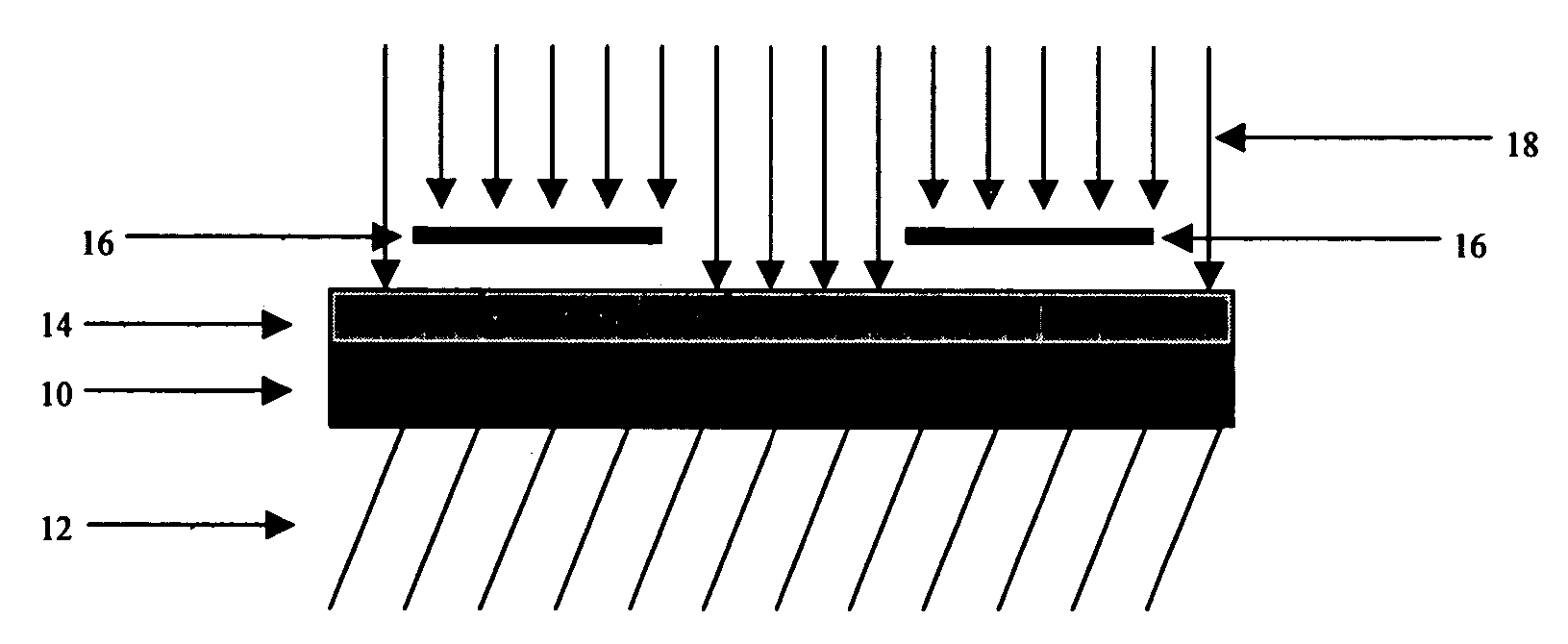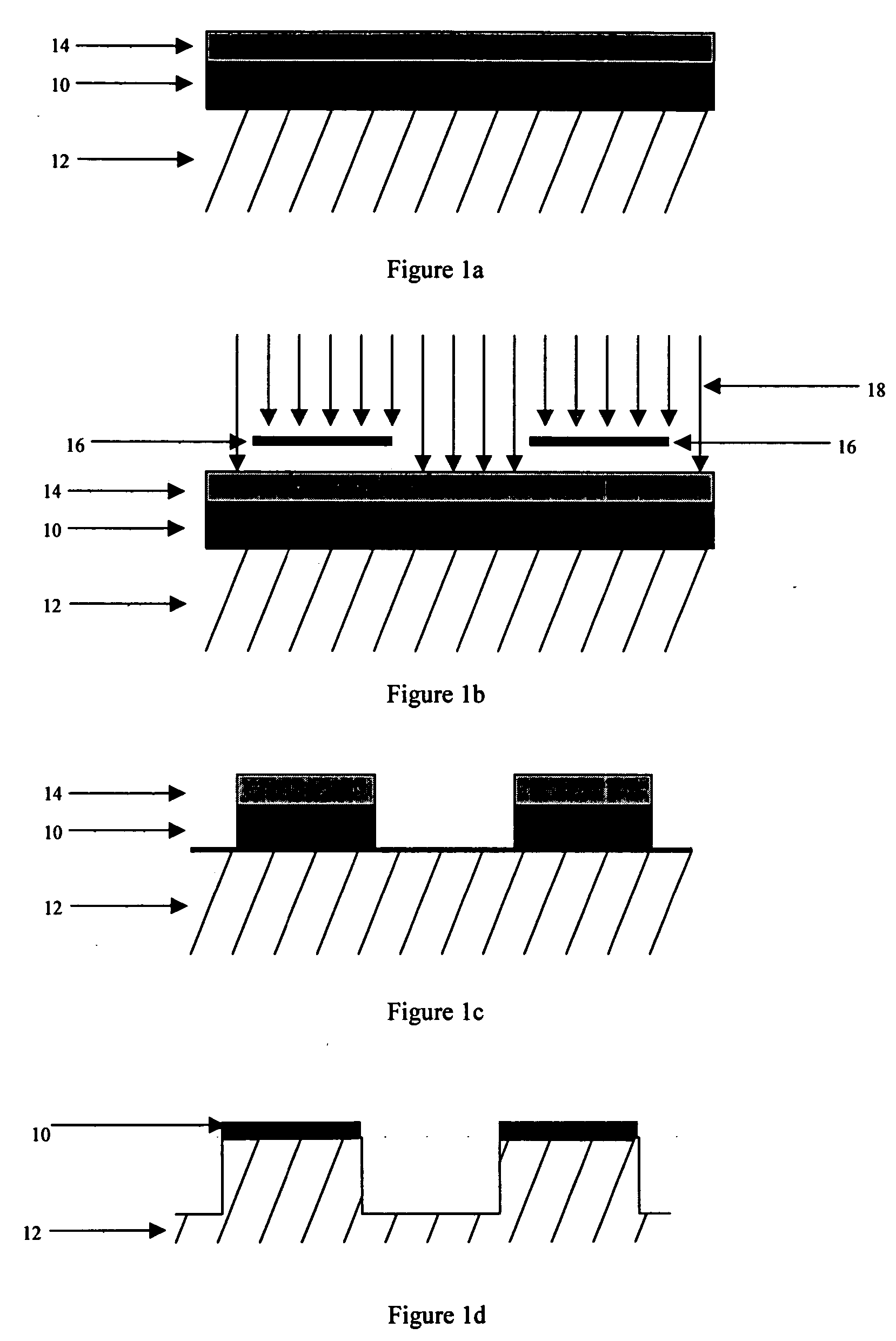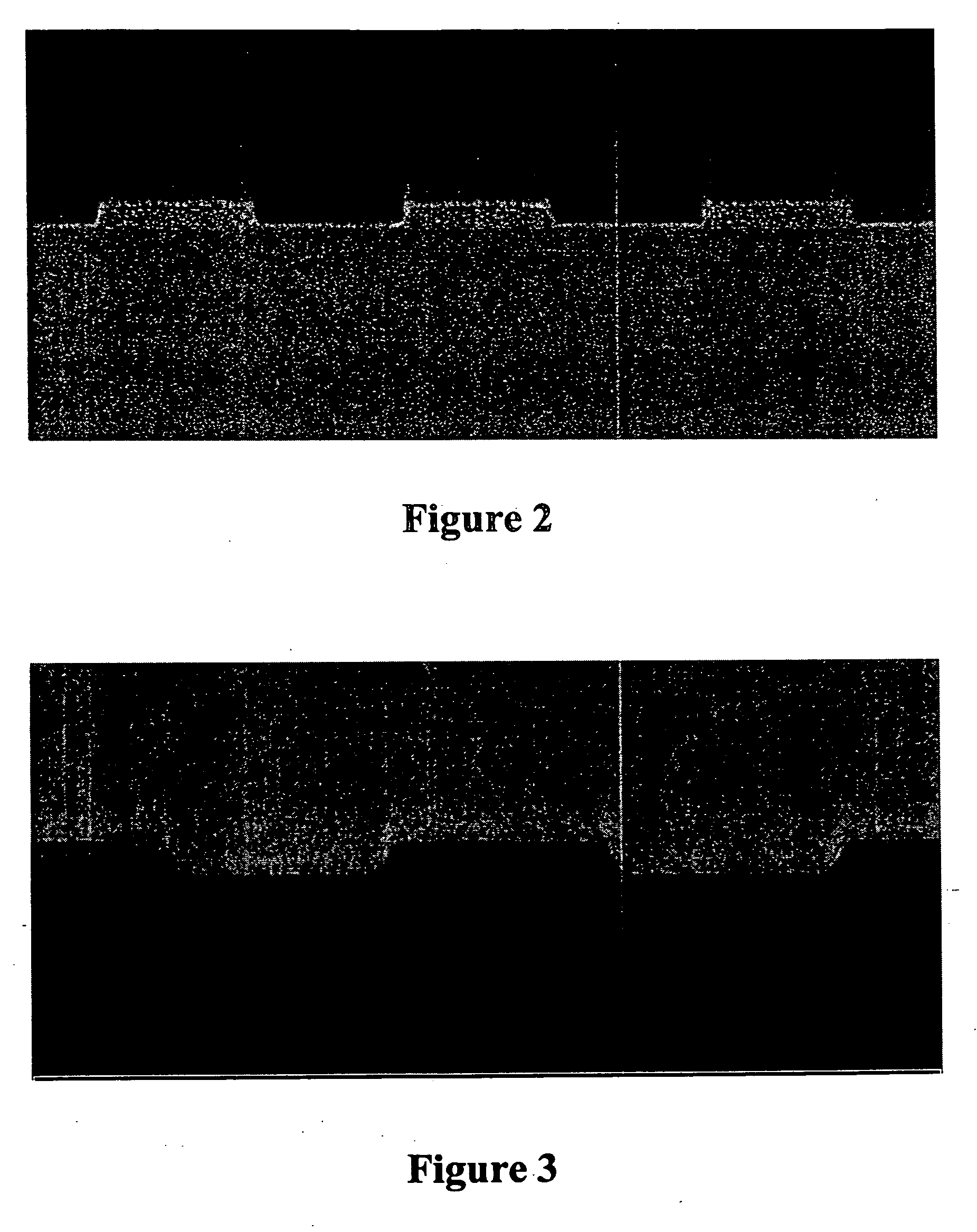Wet developable hard mask in conjunction with thin photoresist for micro photolithography
a micro-photolithography and hard mask technology, applied in the direction of auxillary/base layers of photosensitive materials, instruments, photosensitive materials, etc., can solve the problems of cumbersome procedure, organic photoresist etching relatively fast, and dof to decreas
- Summary
- Abstract
- Description
- Claims
- Application Information
AI Technical Summary
Benefits of technology
Problems solved by technology
Method used
Image
Examples
example 1
Protective Layer Formulations
1. Preparation of Protective Layer Formulation 1
The ingredients used in this part are set forth in Table 1 below. The diketone ligand (ethyl acetoacetate), chromophore (cyano acrylate), and aminoplast crosslinking agent (Cymel®) were dissolved in one-third of the total solvent (PnP). The mixture was filtered through a membrane filter for ion removal. Then, the polydibutyltitanate and remaining two-thirds of the solvent were added. The final formulation was filtered through a particle filter.
TABLE 1Protective Layer Formulation 1Polydibutyltitanate (obtained from DuPont) 24 gEthyl acetoacetate (obtained from Lonza) 31 gCyano acrylate (obtained from St.-Jean Photochemicals) 6.3 gCymel ® 303LF (obtained from Cytec Industries) 6.3 gPnP (obtained from General Chemical Corp.)332 g
2. Preparation of Protective Layer Formulation 2
The ingredients used in this part are set forth in Table 2 below. The diketone ligand, chromophore, and aminoplast crosslinking...
example 2
Protective Layer Process Conditions
The protective layer formulation prepared in Part 1 of Example 1 was applied to a silicon substrate and processed under the following conditions shown in Table 5.
TABLE 5Process ConditionsSpin speed2000 rpmSpin time 60 secBake temperature 205° C.Bake time 60 sec
A photoresist (a non-chemically amplified photoresist, sold under the name Ultra i-123 by Shipley) was diluted with ethyl lactate at a weight ratio of 1:6 to achieve a photoresist composition having a solids content of about 2.2% by weight. The photoresist was applied to the protective layer under the following process conditions: 2000 rpm spin coat; 90° C. / 60 sec soft bake; 115° C. / 90 sec post-exposure bake (PEB). FIG. 2 shows cross-sections of dense line patterns (1:1) obtained at 365 nm (exposure dose—110 mJ / cm2) on an i-line stepper (GCA Model 3300, NA 0.43) with the protective layer of this invention and the diluted photoresist thickness. The protective layer thickness was 76 nm. Th...
example 3
Pattern Transfer from Protective Layer to Substrate
The protective layer formulation prepared in Part 1 of Example 1 was applied to the surface of poly silicon. The protective layer was processed with the conditions in Table 5, and yielded a protective layer with a thickness of 75 nm. A photoresist layer was applied on top of the protective layer and was subsequently baked at 90° C. / 60 sec to yield a photoresist layer having a thickness of about 45 nm. The photoresist layer was then exposed through a photomask at a wavelength of 365 nm and baked again at 130° C. / 90 sec. The exposed areas of the protective layer and photoresist were removed by a 0.26 N TMAH solution. Patterns of the protective layer and thin photoresist, similar to the results of Example 2, were obtained. The wafer with line / space patterns of the protective layer on top of 320-nm poly silicon was subjected to reactive ion etch (RE) with following conditions: chlorine (the etchant) 80 sccm; pressure 25 mTorr; and RIE...
PUM
| Property | Measurement | Unit |
|---|---|---|
| thickness | aaaaa | aaaaa |
| temperature | aaaaa | aaaaa |
| thickness | aaaaa | aaaaa |
Abstract
Description
Claims
Application Information
 Login to View More
Login to View More - R&D
- Intellectual Property
- Life Sciences
- Materials
- Tech Scout
- Unparalleled Data Quality
- Higher Quality Content
- 60% Fewer Hallucinations
Browse by: Latest US Patents, China's latest patents, Technical Efficacy Thesaurus, Application Domain, Technology Topic, Popular Technical Reports.
© 2025 PatSnap. All rights reserved.Legal|Privacy policy|Modern Slavery Act Transparency Statement|Sitemap|About US| Contact US: help@patsnap.com



